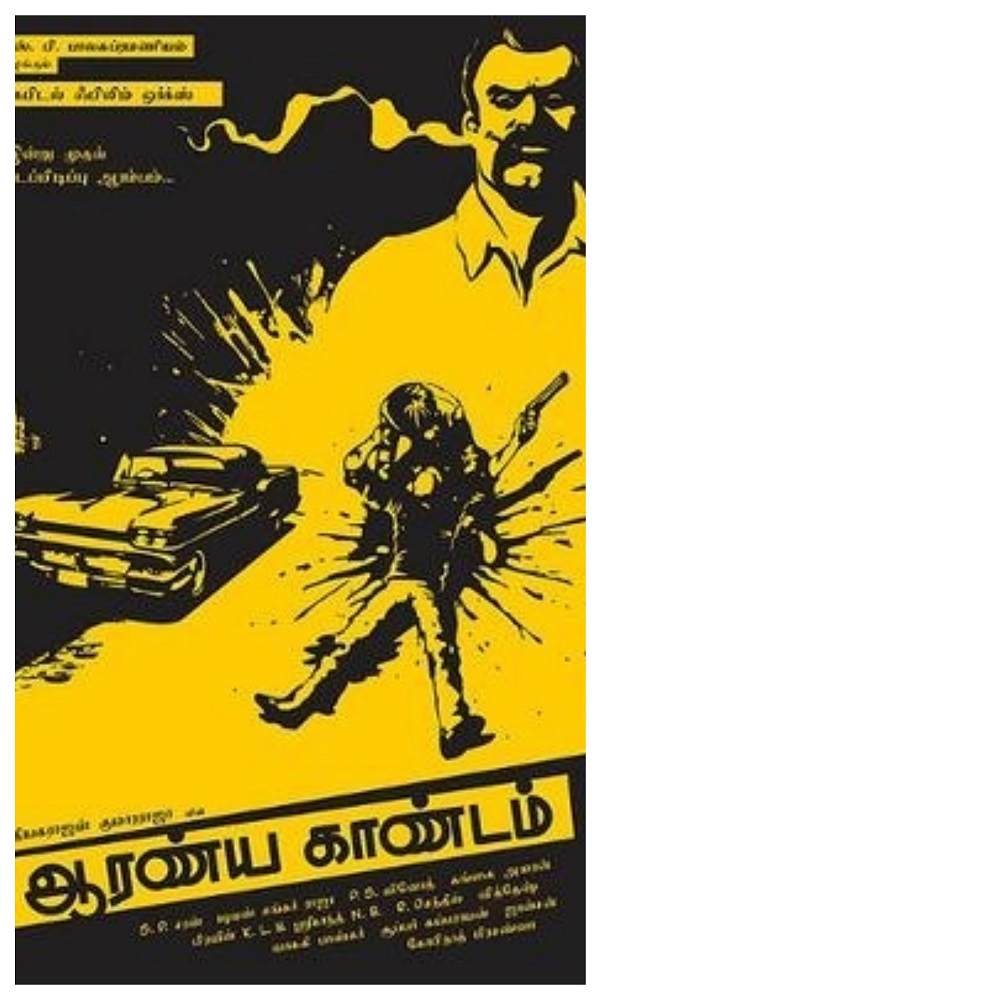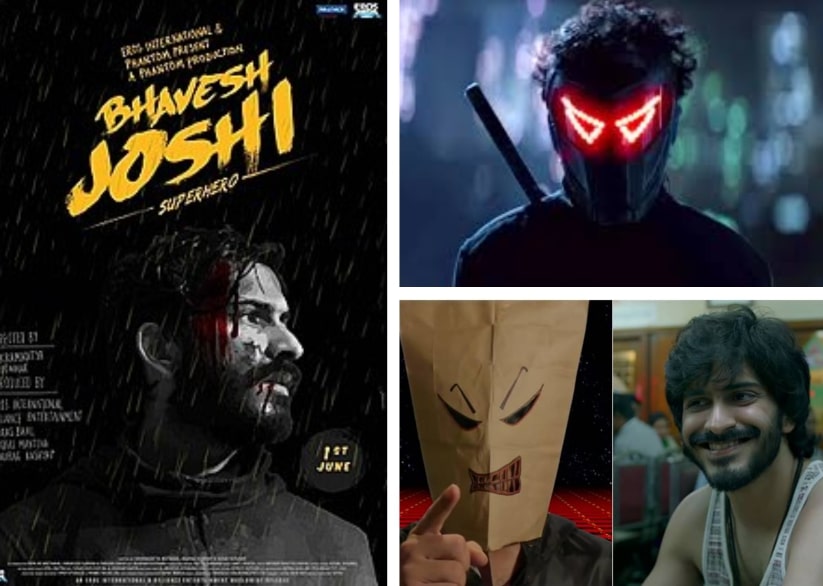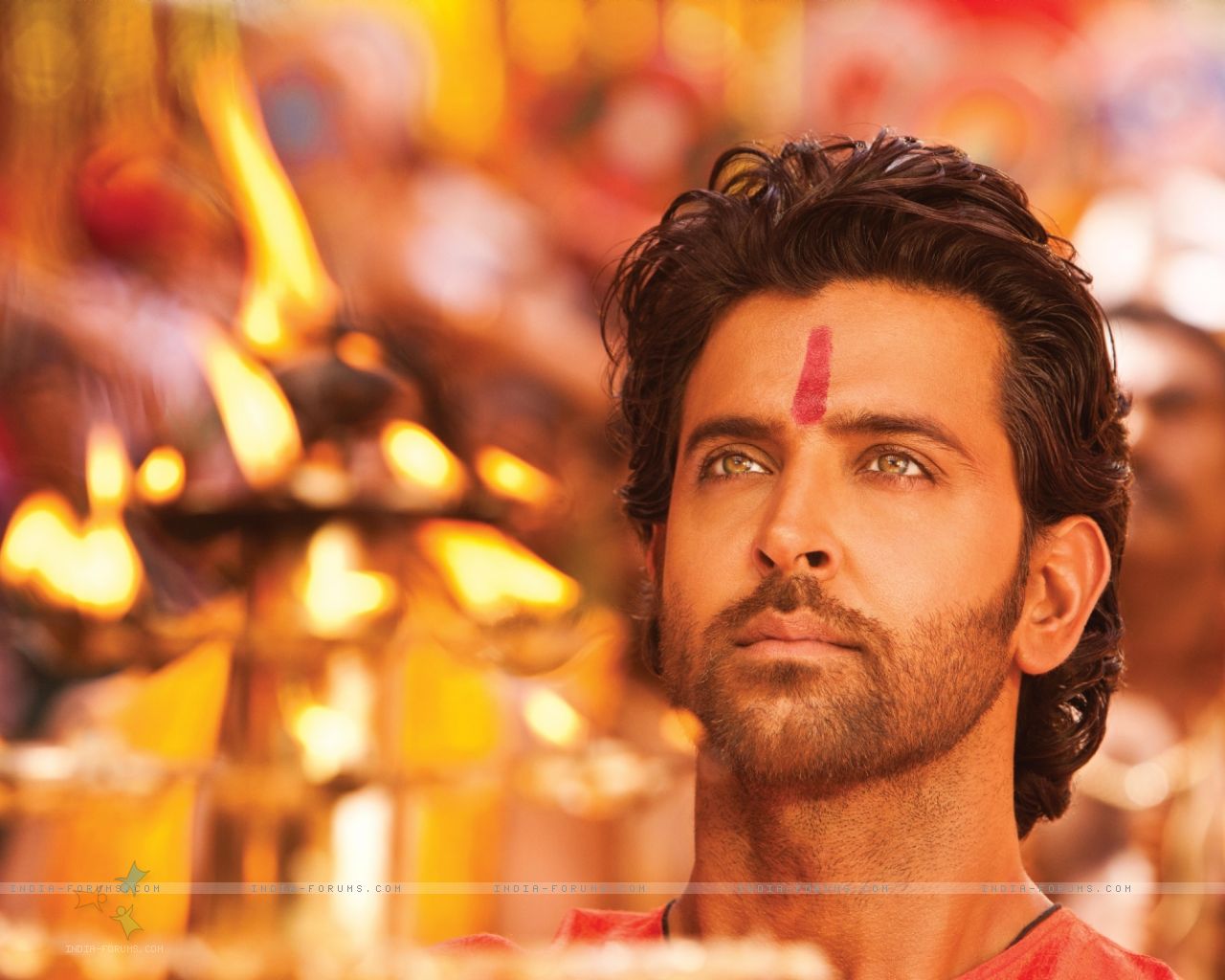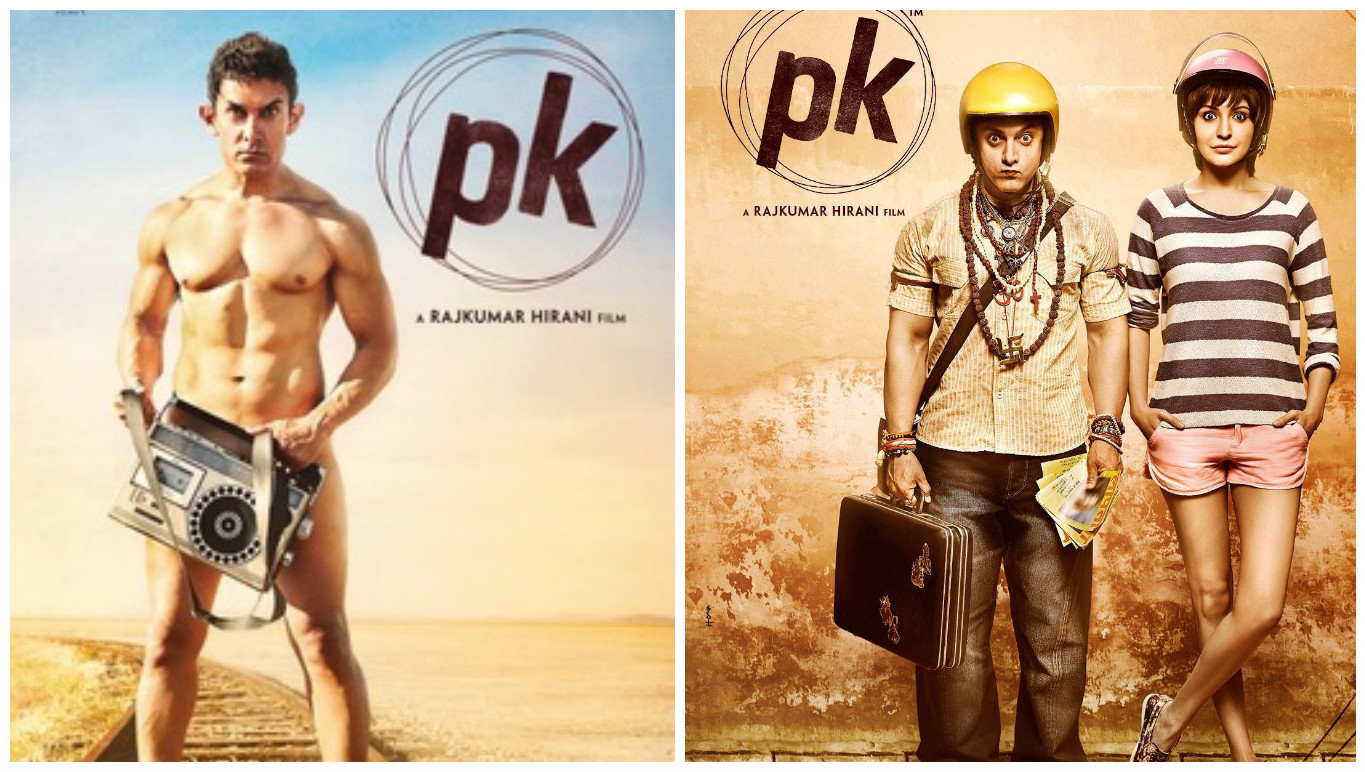AARANYA KAANDAM
AARANYA KAANDAM : MOVIE REVIEW
“ Jungle Chapter “
5 stars out of 5 ( Masterpiece on debut, the rarest of rare things )
Director-Writer : Thiagarajan Kumararajan
Producer : S.P.B Charan
Cast : Yasmin Ponappa, Sampath Raj, Guru Somasundaram, Jackie Shroff
Tamil ( English subtitles avilable ) , 2010
You gotta hand it to a director whose first film is so smacking good that they won’t give him another film to make for another ten years.
A case in point – How do you film a chase scene like how no one has ever done it before ? One can’t just do the same shtick a thousand directors have pulled. Director-Writer Thiagarajan Kumararaja therefore goes brilliantly berserk with every tenet of the cinematic tool-kit. Pasupathy, an ambitious mobster, is on the run, with four separate gangs out to kill him, one of them sprinting a few metres behind. If he stops running, he’s dead Tamil biryani meat. If his mind stops running, his kidnapped wife will be toast and he himself may be braziered by other gangs. Composer Yuvan Shankar Raja is several steps ahead of Pasupathy, having started in Chennai and then vaulting over Europe. These thugs running is so elegant, so a classic symphonic orchestra rears up, then actually it’s a bull fight so a Matador trumpet unfurls, but the resurrectional coup de grace is an exquisite mandolin and piano that awaken nirvana. Visually, the mind is so heavy with ideas that it hits the ground with limbs skyward – the result is an inverted shot of the men bounding. Kumararaja discloses his video-game inspiration with a shot that’s mounted directly in front of the first-person fighter looking straight up at him as the buildings rock all around. A gun-shot rings out and the frame shoots from one side of the alley to another in a freeze-frame. Doves gracefully wing upward in a nod to John Woo’s visual lyricism in the face of deathly action. The dudes turn a corner gracefully fighting centrifugal force, coffee gets knocked out from bystander’s hands, a chained mongrel looks at them and wonders what on earth is going on with these scampering specimens. You’re not in some sanitized dream-world, there is filth and rubble all around in an over-populated city and Pasupathy has been running through this grunge-verse, brain-storming et verbalizing his thoughts all the while to figure out his and wife’s survival. He reaches the city’s garbage dump, and there in that terminal universe his mind ultimately clears from an earlier determination – “yellam clear-aa irakka“. From the same state of Tamil Nadu, chess world champion Viswanathan Anand emerged, but he never had to plan his chess moves while being chased by Russian goombahs.
Aaranya Kaandam, daringly financed by S.P.B Charan, had a long production and post-prod phase that took almost two years and it was released to the public in mid-2011. Tamil Nadu’s audience are the some of the most tolerant and appreciative but they could not get their teeth around this dazzling produce, the depressing box office show leavened to some extent by two National Film awards. There is a scene in the film where a lady is physically brutalized on the bed. It is shown not as a glorious thing but as what it is – an ugly abuse of power. Tamil Nadu’s censor board apparently received wrong signals and may have got inspired by this scene, inflicting 52 cuts on the movie which, it must be said, has its share of profanity. It was ultimately cleared by the central Tribunal in Delhi, which for all the flak it usually cops, should in fairness be considered one of the true heroes of the film.
Story set in Chennai gets its formative spark when Pasupathy ( Sampath Raj), a second-in-command for a mafia don Singaperumal ( Jackie Shroff) asks the latter’s permission to hijack a cocaine load from a rival gang. Singaperumal is a rotten man but all said and done he avers that he does not want this confrontation. Pasupathy is a good man at heart but his ambition and the nature of the profession he is in, makes him cross boundaries and go ahead with this robbery. His boss, unsurprisingly, orders him killed, which makes P dude scram for dear life. Pursuant to his transgression, three other gangs bay for his blood, kidnapping his wife for good measure. Pasupathy must now become a superhero of the Chennai trenches, fighting the powers that be and manouevering one against the other if he is to salvage his neocon hide.
Aaranya Kaandam is presented as Tamil cinema’s first neo-noir. Opening credits in yellow letters of Tamil stylishly zoom forward from a black frame in silence. Pic’s poster is a pulpy send-up of a crime scene, the man and cigar in the background brawny flowing cartoons – again a cool retro of black-‘n’-yellow. The theme of tradition being subverted flies subconsciously thick – the threat to the old-guard in the plot, the Brahminical chants used with brilliant satire to introduce the film’s ignoble gallery of characters in the teaser, Kumararaja’s searingly bold cinema by itself.
Where are the women in this story ? There is the dumpily named Subbu ( Yasmin Ponnappa ), further christened by her devious Sugar Daddy as a ‘dumb whore’, who is petrified when her abuser skulks around, but who is able to relax with a callow colt named Sappai ( Ravi Krishna). Ponappa craftily excels - a svelte model-like sari-clad moll, her cowering fright in the bedroom contrasted with girly shades of wonder, sly sideward glances and loopy smiles with Sappai. This young man is appointed to take the lady out to town and entertain her so that she is ready again for the night.
A concurrent track features a woe-begone yet cacklingly flamboyant loser Kaalayan ( Guru Somasundaram ) who stumbles on the story’s rather pricy McGuffin. In a tale where almost all the adults are rotten with undulating death-wishes, this disaster-prone man’s little son Kodukkapuli ( a chilli-pepper act by Master Vasanthan) is the lone sane character, verbally thrashing his clueless sire and providing a different interpretation of the Wordsworthian “The child is the father of the man“. When one sees a wailing wretch - a mind-blown alcoholic who goes to town with his florid downfall, it is easy to dismiss the work done by the actor behind the collapse. Such is the nicety with Guru Somasundaram’s trainwreck Kaalayan. Alongside his slightly hoarse contralto lamenting self-apocalypse, also witness some affecting shades of vulnerability when he grabs his son and pleads “If you too have a go at me, I will be nowhere”.
Such are the folk of these badlands - a who’s who of the thuggish, the treacherous and the timidly tempestuous. Kumararaja’s triumph lies in his witty slick fusion of the mundane and the stylized. The real world is merely a template on which he can spin his pulpy tale. The red-upholstered retro car in which the gangsters travel is more a style statement than an expected vehicle. Singaperumal’s bedroom has groovy wallpaper that is out of keeping with this loutish boor’s sensibilities – it is more likely he killed some hickster and moved into his rooms the previous month.
Great gangster films like ‘Goodfellas’, ‘Casino’ and ‘Godfather’ transpired in a mostly clean, well-to-do setting partly because of director preference and partly because the depicted gangsters had acquired enough money to routinely circulate in nice environs. Thiagarajan’s ‘ Aaranya Kaandam ‘ is an urban forest that is sister-city with Matteo Garrone’s ‘Gomorra’ and ‘Dogman’. His Chennai is the same region that sported the Sangam civilization before Christ, and the ninth century’s mighty Chola empire that spread its influence to Malaysia and Indonesia. The state still hauls its weight, the second largest state economy in India but civic devastation mars swathes of it and this is on full display here. Want to see boulevards and nice suburbs ? You’re in the wrong place. Squalor and rubble define the architecture. The buildings are crumbling ugly and the parts that aren’t, are plastered with posters that themselves are disintegrating. Even without these thugs, it would be Gomorra. To the director-writer’s credit, he is not at all embarrassed about the milieu.
Pic’s lean mean two-hour ride is powered by zero songs, vibrantly outstanding background score, purity of dedication to mise en scene, and a sense of humour that consistently peppers the dark edgy proceedings. Person-to-person fights are precisely and strikingly choreographed, the action often sporting a soaring sense of flamboyance that is one step higher than the fights seen in earlier Tamil entries like the crudely powerful ‘Captain Prabhakaran’ (1991).
Kumararaja’s focus on filming a scene with a high sense of aesthetics and elegance redeems every frame. Another director could have been given a rough cut of the same story and returned a pedestrian plodder but Kumararaja flies it a la a Concorde. First scene introducing Pasupathy sees him emerging from the darkness to address a table of ruffians – a small touch but a great entry for his contrarian remarks. Later when he teases a thug after his get-away, and that rascal teases back with a counter-threat, Pasupathy squeezes shut his eyes and bares all his white teeth in a wide grimace captured in slow-mo that’s obviously a very staged shot but it’s still a terrific capture of aggrandized emotion. He speeds away in a bike – how did he get that vehicle ? A flashback, shot from the side in slo-mo, shows a rider coming towards the escapee who is swinging a spade. The next shot from front of bike looking back, sees the rider flying back as if towed away by an overhead glider. P Man leaps from the back of a police van, and the shot taken from a camera sitting on the road divider line, sees him landing unsteadily but them composing himself and loopily running away as slow rock music celebrates his get-away.
Subbu and Sappai climb a water tower spinning their Mumbai dreams , and the camera very gradually swivels upwards , circling the arc of the supporting pillars and glacially gliding towards the characters – wittingly or unwittingly a superb mirror for the vortex that is being spun. A close-to-ground shot remains static in middle of the road and watches in the yonder as a van chases and abducts Kaalayan – his son sees this, cries out in alarm and runs after them dropping his snack right in front of the camera on the road – a chilled bright orange ice candy occupying centre of frame. The devil is in the compositional detail and Thiagarajan cozily courts this Satan time and again.
He also hits the bulls-eye with the baritone steel of the story’s real hero Pasupathy, the tall handsome quasi-Macbeth, whose multifarious facets are expertly nailed by Sampath Raj – an inspired choice for this alpha role. Rage, frustration , heroic determination – all issue from his tough but riveting physiognomy, just behind which there lurks a reasonableness and even an orphan current of kindness. You know the casting has mostly hit the spot when even the cameos sing – Boxer Arumugam and Sai Dheena as the hoods acing it with no-nonsense deadpan deadliness.
But Jackie Shroff, the great hero of the 80s and 90s Hindi mainstream cinema, is a ghost of his former persona here. The habitually philanthropic gentleman decided in the twilight of his career to pitch in for independent cinema, appearing in cameos for Ashok Amritraj’s TV film competition for budding directors, and unsavoury roles in ‘Aurangzeb’ amongst other atypical choices. Like in the latter, he just can’t seem to snap out of a muddled benignness. His mafia boss character is given a great-sounding leonine Tamil name ‘Singaperumal’ but what we see is a tired Shroff from somewhere outside Tamil Nadu hardly possessing the scare factor of a top gangster. His belly stretching out a white vest, unshaven with whitish-grey unkempt hair and bespectacled with dull eyes, he looks more a washed-out alcoholic than pezzonovante. Some comedic touches are deliberately given to his persona, but Kumararaja for all his debut magnificence, is unable to goad Shroff on to a chilling act, with the role itself poorly written.
Dialogues written by the helmer himself, nakedly dance in the shameless argot of these boondocks. There’s a film-winking-at-a-film line where a gang member jokes with his brethren and instructs them how to score with a lady by asking her which of the two superstars she likes – Rajnikanth ( the never-lip-kisser) or Kamal Hassan ( who hasn’t shied away from carnal regalia). Usually the decisions of characters advance the plot, but when five men travel in a car, their banter about who will recognize a cellphone call switched on to speakerphone mode and who will not, leads to the unexpected next level. Kumararaja has good fun taking the mickey out of Brahminical recital of Tamil, using it to spiffy effect in the movie’s terrific trailer, and getting a nicely satirical laugh when a robe-clad mendicant has the temerity to presume that he’s got the jump on a mob boss. Script is bedecked head to toe with profanity which Tamil Nadu’s Censor Board was hopping keen to strip away. Go to any boys’ college hostel and you need not even cock your ear to hear the vulgar slang flying thick but Chennai’s censor board apparently has had its aurals soaked in the sweetness of unsullied noble words from birth to current day and were shocked to note the beautiful gangsters speaking filthy.
Enmeshed with the directorial vision, there is the many-splendored modernist score by Yuvan Shankar Raja. He sprinkles the soundtrack with retro Tamil numbers but principally layers its crust with blooming flavours of internationalism. Twinkling stabs of the piano inform the edgy world of Singaperumal , while a sobbing Chaplinesque violin serenades the sorry trappings of Kaalayan. Raja crashes the ceiling with a global kaleidoscope in that great chase scene and reserves some of the best strains of euphoric rock music for Pasupathy’s flight. At the end, where frisson and the call of Achillean battle palpitate through the air of a deserted mill, a periodic beat rings out – like a metal can thrashed resoundingly against a frame. This superb tension gloriously breaks during a face-off where a Flamenco paints the scene red. Pic is full of such sonic excellence.
Thiagarajan Kumararaja’s Wikipedia biography is a beaut of school-boy narration and hard-boiled realism. “His parents thought he’d pick up bad habits if he stepped out, so he stayed mostly at home ”. When he steps outside home, this is what happens.
UPN
UPNWORLD welcomes your comments.










0 COMMENTS
WRITE COMMENT